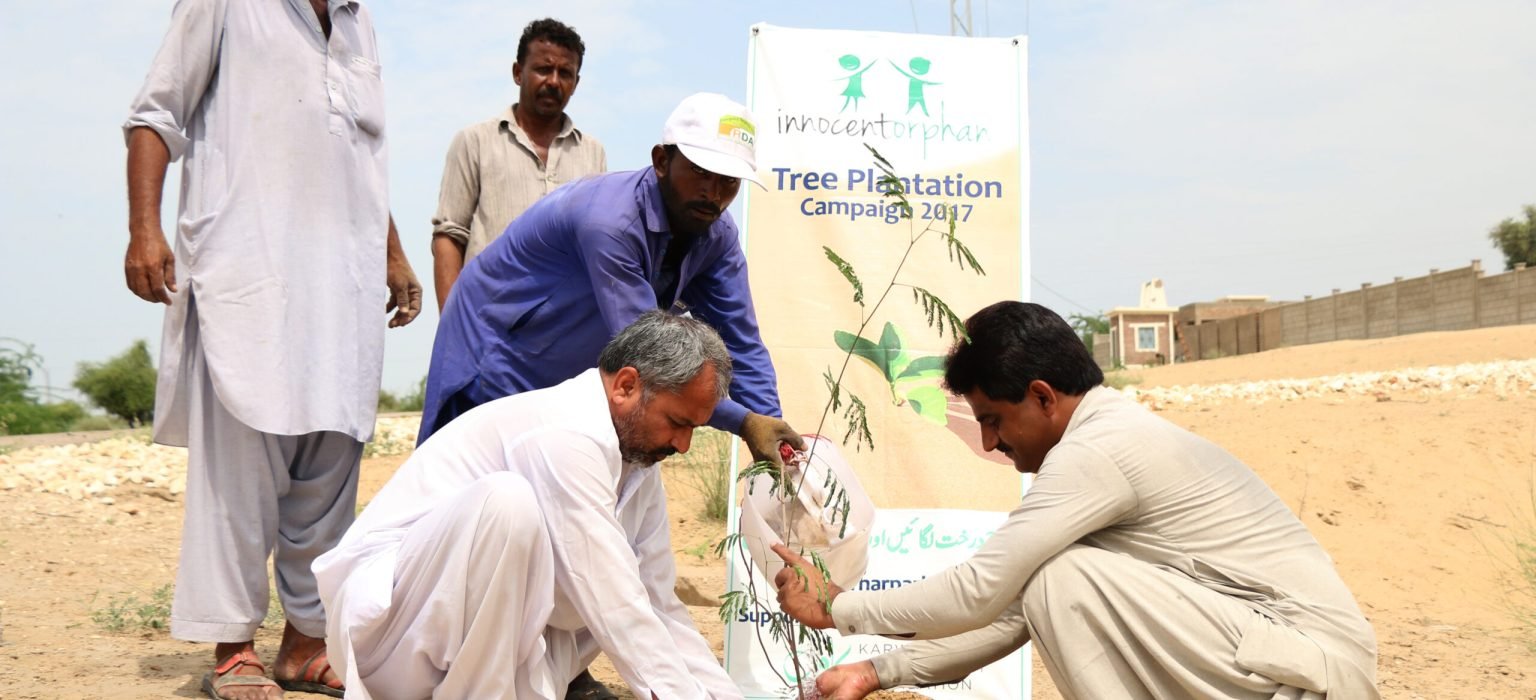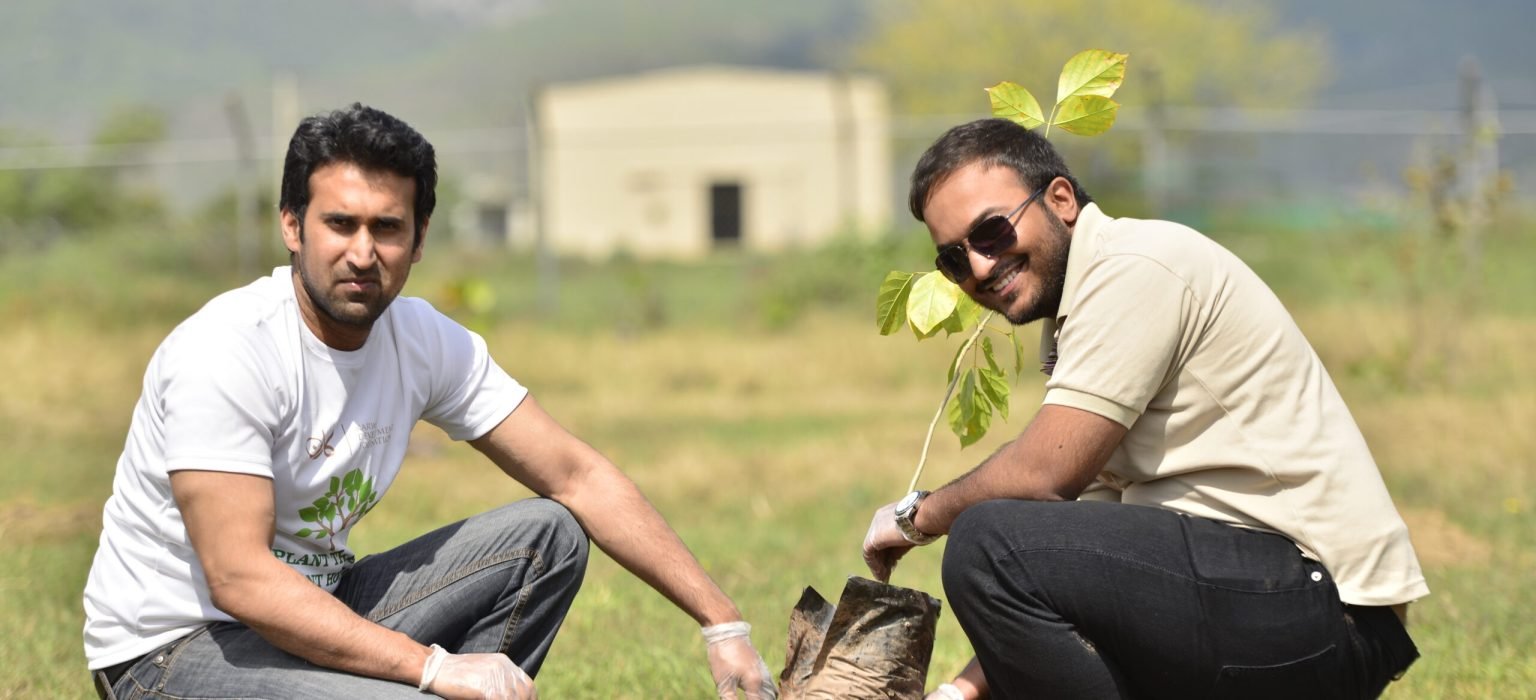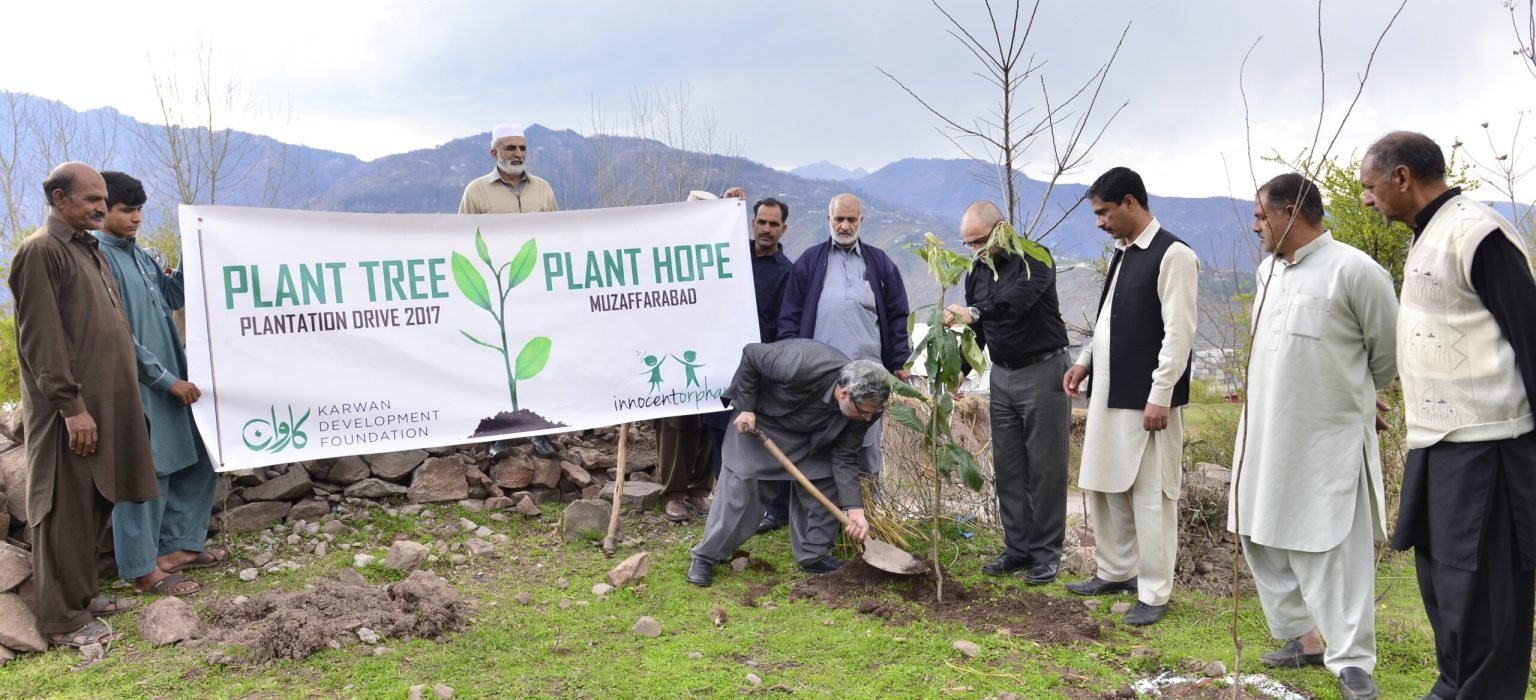- Karwan Foundation
- Environment Projects
Environment Projects
Environment Projects
he menace of environmental pollution has us encapsulated because of industrialization, urbanization, automation and motorization trends. According to a report released by World Bank, Pakistan has allegedly received more harm than any other country in South Asian Region because of air pollution. Paucity of attention from governmental side has given wave to ambient concentration of health hazards.
According to a World Bank 2014 report, more than 22600 adult deaths were caused by urban pollution is 2005, 80,000 hospital admissions per year were recorded, almost 8000 cases of chronic bronchitis and no less than five million cases of respiratory discomfort were documented in Pakistan.
The numeric value of deaths in Pakistan has increased from 2005 till now and breath Life Campaign mentioned 59,241 deaths on average, amongst which 13,683 are children. Severity of pollution is quite clearly reflected in the morbidity and mortality rate. Engorging number of vehicles in Pakistan is one of the vital causes of air pollution which has increased from 2 million to 11 million approximately in a score.
World Health organization released a report placing Pakistan on 4th number in hierarchy of most polluted countries in the world. The quality of air that we breathe in is deteriorating. There are periodic rain showers, which respite Pakistanis for a while but there is no definite full stop to it.
The extreme air pollution in Pakistan is an outcome of the deforestation. Forest covers are now 2% which should have been 25%.
What does Karwan do?
Karwan works on plantation in different regions of the country as per the requirements of that region.
Tharparkar, Sindh
The most significant project of plantation by Karwan is in Thar. In 2017 alone, 10,000 plants have been cultivated in Thar desert. The purpose is to tackle the negative impacts of climate change and to raise the level of water under the soil. Following plants have been cultivated by Karwan in Tharparker keeping in view the uniqueness of its situation and conditions.

Among all the trees planted in Tharparkar, half were Neem (Azadirachta indica). It was used the most due to its highly environment friendly nature and high sustainability in arid conditions after a year’s care. While the leaves of the tree are used as fodder by goats and camels, the medicinal uses of the Neem are highly values and practiced by the locals too. Most common use of the Neem is the Miswak made out of tree wings for oral hygiene.
The tree used second most in number (2,500) for plantation was Sohanjira (Moringa oleifera). Not only its leaves are edible by humans as well as animals but also its flowers, fern, bark and seeds can be consumed. The tree is rich in vitamin C, calcium, potassium and proteins, and can address malnutrition in the district.
A total of 1,300 trees of Kandi (Prosopis spicigera) have been planted. This is the most commonly found plant in Tharparkar District. Its dried ferns are also used as fodder for goats, sheep and camels. During the lean period prior to monsoons it is the only green and fruiting tree to provide some food for human and fodder for livestock.
Ber (Ziziphus jujube) is the fourth plant Karwan has used in plantation drives in Tharparkar and 1,200 have been planted so far. The tree yields small red and yellow colored round fruits locally called Beri. These fruits contain vitamin C, sugar, minerals, calcium, phosphorus, iron, and carotene, proteins, fat, and carbohydrates. The fruits are also rich in B group of vitamins i.e. Thiamine, Niacin and Riboflavin and beta carotene. Apart from the nutritional benefits, the twigs of Ber are widely used to construct protective hedges around the houses and agricultural fields.
Islamabad, Federal Capital

Karwan is based in Islamabad so the first area we started plantation in was the capital region. For the past 4 years, Karwan has been organizing plantation in Islamabad each year with the support of the Capital Development Authority who help us with the provision of plants along with the identification of suitable locations. Along with other plants, the choice of orchid (Kachhnar) has been made for plantation in the capital because the plant is known for addressing pollution. Due to unprecedented increase in automobiles, deforestation and growing industrialization in the capital region, the Kachhnar is recommended in Islamabad due to its effectiveness in controlling pollution in urban localities. Major areas where plantation drives took place were sectors H-10, H-11, G-10, E-10 and Ali Trust on Kashmir Highway.
Nowshera, Khyber Pakhtunkhwa
In Nowshera, Karwan partnered with the Forest Department to plant Eucalyptus on the banks of River Kabul near Mia Essa. The idea was conceived following the 2010 floods that cost huge devastation near River Kabul. The plantation was a means of disaster risk reduction, to address the issue of soil erosion. Karwan got the plants from Forest Department on a subsidized rate and involved local community based organizations in the plantation process to enable them to continue it in the future.
Muzaffarabad, Azad Kashmir
In Muzaffarabad, Karwan has planted trees to address the problems of forestry gap dynamics. The hills that should have been covered with trees for the beauty of the area were selected for plantation in an effort to save the environment. Among the trees planted were pines as well as fruit trees.
The trees were strategically planted closer to the inhabited localities so that local communities could take care of them. People of the area where water supply schemes were implemented by Karwan were also involved in the plantation process. In order to motivate the community for plantation, Karwan organized a walk on the plantation day. A training of the local community was also conducted with the experts from Agriculture Department.
Join your hand with us for a better
life and future
All rights reserved © Karwan Foundation 2023 Powered by STACK EXPERT

